There are numerous agro commodities in which to invest your money, but one standout product is Shea butter. Shea butter has a large global market, especially since it is organically produced. Shea butter is a popular and wonderful product. It has a promising future and sells well in the international market. To meet the growing demand, opportunities exist in its production value chain to produce on a small, medium, and large scale.
Shea nut is the raw material. It is abundant in quantity and quality and will be made available for production. You will be assured of readily available raw materials depending on the proposed location of your manufacturing plant. It is undoubtedly closer to the shea-producing states of Oyo, Kwara, Kogi, Niger, and Kebbi.
In each of the shea sourcing areas, a shea nut gathering point should be established. Each shea area should have a central warehouse and office where shea nuts are harvested and temporarily stored. The shea nut harvest will be coordinated from this office. Women cooperatives collect shea nuts and transport them to a central point/office. Small trucks will transport shea nuts from the central point to the central warehouse in the shea zone, where they will be temporarily stored before being transported by larger trucks to the production factory.
The Possibilities
There is a growing demand for Nigerian butter as an ingredient in the cosmetics, pharmaceutical, and confectionary industries, but the commodity is in short supply because much of it is processed by local women using crude and labor-intensive methods. Investment in large-scale butter processing will not only be profitable, but will also create a feel factor for government support because it will provide employment for the country's teeming youths.
The product has piqued the interest of cosmetic companies due to the growing demand for a more natural product that is ideal for skin. Cosmetic companies in the United States and Europe account for 10% of global demand. The chocolate and confectionery industries account for 90% of global demand. The European Union allows up to 5% shea butter in its confectioneries, and if the US lifts its ban on using Cocoa butter alternatives, consumption in this sector will rise as well.
Because of the market's high cocoa prices, commercial interest in shea is focused on its use as a substitute for cocoa. On the other hand, demand for certified shea butter is critical, especially when considering the availability of high-quality products that companies and buyers are looking for.
Market Size
Considering the market's size. The market is enormous. In 2021, the global market for confectionery products was estimated to be around $400 billion, while the market for cosmetics and toiletries ingredients was estimated to be around $80 billion. To stay ahead of the competition, one must follow the major players in the shea butter, chocolate, and cosmetics industries on a daily basis and respond to trends.
Asia is also an important growth market for CBEs because most Asian countries have no regulations prohibiting the use of CBEs in chocolate. Western Europe and Asia consume approximately two-thirds of global CBE production(2/3) (66%). Overall, global chocolate consumption is increasing, particularly in the developing economies of Latin America and Eastern Europe, where disposable income and population are rising. Despite the market's relative maturity in Western Europe, chocolate consumption remains high.
Shea cake is another source of income. Shea cake is a byproduct of shea butter production. It has monetary worth. It can be used as a raw material for bricks and is in high demand overseas as a niche input in high-end animal feed production.
The Issue
Shea butter is in higher demand than it is currently produced. Since time immemorial, rural-based women have used manual traditional methods to process approximately 60% of all crude butter produced in Nigeria at a relatively low extraction rate of about 25%. Shea butter production is currently done manually on a semi-industrial and small 100% industrial scale in Nigeria. Quality issues are one constraint to shea production in West Africa. Because West Africa lacks sufficient factories to produce high-quality Shea butter, export opportunities remain underutilized.
Buyers are most concerned with the specific quality of shea butter required in the international market. Buyers are interested in the Iodine number, acid and free fatty acid number, and other parameters of the shea butter they intend to import. Because African entrepreneurs have limited access to financing for trade and investment, multinational corporations produce 80% of Shea butter in Europe and Asia.
Shea trees grow only in West Africa and, to a lesser extent, Central Africa, and nowhere else on the planet, with Nigeria being the world's leading producer of the raw material (Shea nut). Nigeria produces approximately 500,000 tons of shea nuts per year. On the business front, Nigeria can compete favorably with established industries in Europe and the United States. Because the raw material can only be obtained in Africa, the disadvantage of processing Shea Nuts into Shea Butter in Europe or Asia is the high transportation costs. To make 1 kg of Shea Butter, you need 2.2 kg of Shea Nuts, so as you can see, producing Shea Butter in Nigeria with easy access to raw materials is much cheaper. Staff costs are also lower here.
The Answer
To meet the demand for shea butter, Nigeria needs to invest more in a high-tech, mechanized shea butter processing plant. Shea is a self-contained industry that could rapidly scale with investment in processing machinery and skill training.
According to research, a 50tons per day processing plant could be set up in any industrial zone in the country, with a relatively extraction rate of 40% and an oil content of 40-50%, yielding 20 tons of shea butter per day, 500 tons per month, and approximately 6000 tons per year, which could be further refined to meet market demand. Shea cake is another economically beneficial byproduct of shea butter processing. Foreign buyers are also interested in it.
On the financial front, there is the possibility of a quick and higher return on investment. The project will cost approximately $3.6 million, with a break-even point in earnings before the end of the second year and a profit margin of more than 90%. Earnings before taxes, depreciation, and amortization (EBITDA) is positive, and investors can expect dividends in the coming years.
Development of the Sheabutter Industry in the Producing Countries.
There has been a progressive development of Sheabutter trade in the producing countries as Nigeria, Ghana, Burkina Faso, Mali, Ivory Coast etc. As technology advances, many small scale producers are realizing the need to utilize the mechanical process in processing Sheabutter to improve efficiency, productivity and quality. The mechanical plant is coupled as one made up of the following chambers as Shellers, Crushers, Steam roaster, miller and mixer. The development of this plant has mechanized the unit operation of Sheabutter production from the traditional laborious process.
From my own research, there is yet to be full adoption of the mechanized process, rather, a semi -mechanized system where the local producers are using the traditional practice for some process and mechanized plant for the other stages. However, we expect a progressive development that is as a result of increased product demand, technological advances and unwavering government support for Agriculture.
Technological advances has improved Sheabutter processing by serving as a training Center for local processors and catalyst for the development of Sheabutter Industry in Nigeria. A sample production facility in Nigeria has a developed plant producing 0.45kg of Sheabutter from 1kg of Sheanut and processes 12.5kg of Shea paste in 10mins. It has input and output capacity of 600kg of Sheanut and 270kg Sheabutter in 8hours operational times per day.
Requirements/Methods of Processing
To process Shea butter, one would need the capital to purchase raw materials, equipment, and machinery, set up necessary facilities to aid production, and ensure the provision of paper documents such as the feasibility analysis, which would provide necessary guidance on the project.
However, if you intend to exploit a Shea Butter plant with specially developed machines, you will require managers with a technical background; those who have several years of experience in the industrial production of Shea Butter. More information on this will be provided to you in the detailed feasibility analysis of this project.
You can choose between refined, raw, and cold press processing methods during the manufacturing process. But I want you to know something about shea butter: the processing method you use determines the quality and quantity of your shea butter output. The refined shea butter has become one of the most popular and widely available shea butters on the market. It is white, odorless, and hard in texture because it is subjected to extreme heat during the refining process, which changes its state and ensures a longer shelf life. Hexane will be used by refiners to remove the color and nutty fragrance. This is required if one wishes to use Shea Butter without the appearance and odor variations.
Alkali, phosphorus, and bleaching earth will be used as chemicals. The alkali requirement per ton oil is 1.6-2.2, the phosphorus requirement is 0.5-1.0kg, and the bleaching earth requirement is 3-20, depending on the color requirement per ton oil. In general, chemical consumption will be determined by the acidity of the crude shea butter extract.
The raw production method yields Shea Butter ranging in color from light beige to creamy yellow. It is smooth to the touch, absorbs quickly, and occasionally has a roasted fragrance. Raw Shea Butter is experiencing a well-deserved renaissance. The end result is a miraculous beauty, anti-aging, and therapeutic lotion that is naturally rich in vitamin A and E, contains more antioxidants than Green Tea, and contains six different essential fatty acids. Because of its high nutrient content, Raw Shea Butter can be used for everything from hair care to wrinkle reduction.
The latter is a new method that is gaining traction. It is the pressed cold. Cold pressed Shea Butter yields a product that is lighter in Shea Scent and Color while remaining nutritive.
Cold pressing is the process of extracting oil and nutrients from the Shea Nut using an expeller press or similar device. An expeller press is a machine that applies intense pressure to oil-bearing materials such as olives, coconuts, and, in this case, Shea. Heavy friction and continuous pressure release oil from the Shea, and the oil seeps through small openings that prevent solid shea fibers from entering.
Although cold pressing does not extract every trace of oil in the same way that raw processing does, it does shorten the extraction time by 3-5 hours. The end result is similar to refined Shea Butter, but there are no chemicals or synthetics used.
What is the use of Sheabutter in Importing Countries
You might be curious to know the use of Sheabutter in Importing countries. The answer is , there is a lot of benefits and uses of Sheabutter in developed countries and that is the reason for the upscale of demand for the product. No country is absolute and it’s a reality of inter – relationship between countries.
According to the Global Shea Alliance, shea butter is primarily used in the food industry (accounting for approximately 90% of total use). This is especially true in the confectionary and beverage industries, where it is widely used as a substitute for cocoa butter. Because it is edible, an increasing number of people are using it in their cooking.
Shea butter, on the other hand, is very important in the cosmetics industry. It is used in the manufacture of cosmetics: Skin and hair moisturizing creams, stretch mark prevention products during pregnancy, dry scalp hair treatment, aftersun products, and skin treatment after sunburn, Creams for anti-aging and wrinkle reduction; Shaving and aftershave creams that soothe the skin; Products for reducing fatigue and pain caused by insect bites and stings.
Diaper rash prevention products for babies. Hair conditioners, lip gloss, soaps, and a variety of other products are available. Shea oil is also used by soap makers to make soap, which improves cleaning abilities. Furthermore, Shea butter can be applied directly to dry skin and hair. We can go on to include derivatives of already refined Shea butter where do Shea products are refined further and mixed with other products in the industry.
Top Sheabutter Exporting and Importing Countries
As we have stated earlier, Nigeria is the world’s leading exporter of Shea butter, and the Shea tree is grown in approximately 21 of Nigeria’s 36 states.
Do you know that China is the world’s largest importer of Shea butter? Despite challenges with production, storage, electricity, and other factors, data show that Nigeria is the world’s leading producer of shea butter. Nigeria has the capacity to improve it’s production quality and quality by improving it’s production process and using mechanized system of production.
By research statistics, Nigeria has 39.87%. (302.96k metric ton), Mali has 29.76% (226.09k metric ton) (226.09k metric ton), 18.43% Burkina Faso (140.04k metric ton), Ghana – 4.18% (31.59k metric ton) (31.59k metric ton), 4.16% Ivory Coast (31.59k metric ton), Benin – 1.83% (13.91k metric ton), Togo – 1.76% (13.39k metric ton) (13.39k metric ton)
Shea butter produced in Nigeria is of high quality and plentiful, particularly during the peak season (June to November). Because raw produce is readily available, international buyers can obtain it at a competitive price. There is a high demand for agricultural products in Nigeria, with many international buyers looking for low-cost, high-quality products.
The Difference Between West and East African Shea Butter
Africa is blessed with Sheanut. Vitellaria Paradoxa and Vitellaria Nilotica are the two most common shea nut species in Africa. Vitellaria Paradoxa is prevalent and found in West African countries such as Nigeria, Ghana, Cote d'Ivoire, Burkina Faso, and others. Vitellaria Nilotica is mostly found in Uganda.
As a shea butter importer or exporter, you should understand the distinctions between the two varieties. The West African type has a better consistency, works well in most formulations, and is not too soft. When compared to East African shea butter, it also has a higher melting point, higher concentrations of sterol and Vitamin A, and lower concentrations of oleic acid.
Nigeria export three major grades of shea butter.There is currently no official grading system for shea butter though the African Organization for Standardization is working on one. The Global Shea Alliance developed the only shea-related grading standard, but only for shea kernels.
However, the following are the most commonly used grades of shea butter.
1. Shea Butter Unrefined
This is extracted directly and has not been processed in any way. It is entirely natural and contains no additives. Natural Shea butter is soft and yellowish in color. This is the best of all types to use for moisturizing skin and hair, as well as for healing. It retains all of its natural strength because it has not been tampered with.
2. Shea Butter Refined
This Shea butter has been processed, so the natural color, smell, and other natural strengths have been lost. It is heated to extremely high temperatures, which causes it to bleach and deodorize. This heat will cause the Shea butter to lose some of its beneficial ingredients.
3. Shea Butter Ultra-Refined
At this point, the Shea butter would have gone through two or more filtering processes, altering its original composition. The color would have become white. It is a key component in the manufacture of many cosmetics. Some of the natural healthy nutrients would have been removed during the filtering process, making it less healthy for consumption. Furthermore, some of the additives used during the process can render it unfit for consumption.
In addition to the foregoing, export-grade refined shea butter (suitable for the cosmetics industry) is expected to have the following characteristics:
Fatty acid content is low (FFA 1%).
Peroxide value is low (2 milliequivalents per kilogram, mEq/kg).
Impurity content is low (0.2%).
Moisture content is low (0.2%).
Sheabutter Product Sourcing
When compared to doing your own sourcing, buying directly from an export company can make the purchase process easier and less stressful. However, when dealing with an export company in Nigeria or Africa, there are a few things to keep in mind. The following are the specific requirements for Nigeria, but they mostly apply to other African countries:
To ensure that the company is registered and permitted to conduct business, the exporting company must be registered with the Corporate Affairs Commission (CAC). In addition, the export company must be registered with the Nigerian Export Promotion Council (NEPC). To accept international payments, the company must have a domiciliary account.
In addition, there are International incoterms rule that an exporter must comply. Before the shipment leaves the port of origin, the company should complete all necessary export documentation. Among the documents are Origin certification, Inspection Certificate for Bill of Lading (SGS, Cotecna, Bureau Veritas, Intertek, etc), Certificate of phytosanitary safety, Certificate of Fumigation etc.
Where Can I Find Trustworthy Exporters?
How to find shea butter/shea nut exporters in Nigeria is a recurring challenge among some exporters. You can use any of the following methods:
Attend trade shows.
Use search engines such as Google, Yahoo, and others.
Look for agents on Linkedin.
Join trade platforms (e.g. Alibaba, Tradeford, Tradekey, Exportersindia, Indiamart, Go4WorldBusiness)
Independent Export Firms- In Nigeria, there are a lot of them. A current list can be found on the NEPC website. You can look for a NeoAgric company and try them out or reach me to guide you.
Shea Butter International Price Per Metric Ton
In the International market, quality Sheabutter is a hot cake and well priced. In the international market, the unit price ($ per kg) of Grade A Shea Butter is determined by the quality of the produce (usually the more the processing, the higher the price), the cost of raw materials, the Age of Shea Butter (this can affect the price), the quantity requested (note that the greater the quantity, the cheaper you can get it per ton). Other minor difference can be due to the harvest season (it is more costly when it is out of harvest season), Cost of freight and transportation, Markup percentage, Technology and infrastructure are available in the country of origin, Distance from the origin country, Import taxes and the buyer and seller's relationship.
However, the present price of Unrefined Sheabutter is $2500 - $2800 per ton in the International market.
How to Make Payment for Your Produce
You can pay for Sheabutter or Shea nut in a variety of ways, but three of the most popular are:
Bank Payment Advance Payment Letter of Credit (T/T) (LC) is the most popular and most acceptable means of payment of International business. It protects both the buyer and the seller and promote business relations between countries.
The second is Bank Transfer (T/T)
T/T, "Telegraphic Transfer," or "Telex Transfer" are other terms for bank payments. In other words, it is a wire transfer from the buyer's bank to the seller's bank.
A T/T is not the same as a wire transfer, which is commonly performed via the SWIFT network. When a seller or supplier requests a T/T payment, they are actually requesting a wire transfer.
A T/T is not the same as a wire transfer, which is commonly performed via the SWIFT network. When a seller or supplier requests a T/T payment, they are actually requesting a wire transfer.
One of the most common payment method in international trade is wire transfers based on the SWIFT system. It usually takes 3-5 working days to clear and costs between $25 and $50 USD, depending on your agreement with your bank's commercial department.
Payment in Advance
There are sellers who will ask for 30% to 50% down payment, and for good reason. If both parties have previously done business, sellers can request a percentage of the sales (around 30%) before they proceed with the shipment and they can request the remaining amount after sending the buyer a scanned copy of the Bill of Lading.
It is the most secure option for exporters, but not to the importer and it also ensures that they will have some funds to assist with sourcing. It is popular among manufacturers and commodity traders on B2B marketplaces such as Alibaba.
Advance payment, on the other hand, carries significant risk for the importer (buyer) because the exporter (seller) may not be under as much pressure to ensure quality checks as with a stricter form of payment. Some may even vanish entirely.
However, advance payment is very useful and widely used. For example, the seller may need to secure the commodity due to increased competition.
It can also be used when the exporter requires funds for sourcing or processing raw materials. The most important thing is for both the importer and the exporter to have a track record of successful deals with each other or other well-known companies.
Credit Letter
A letter of credit is an agreement created by the buyer's bank that guarantees payment if certain conditions are met. It is the most secure payment methods available to both buyers and sellers.
Some of the types of Letter of credit are:
Commercial Letter of Credit, Transferrable or Non-Transferable Letter of Credit, Green Clause Letter of Credit, Sight Letter of Credit, Standby Letter of Credit (SBLC) Usance or Deferred Payment, Letter of Credit Revocable or Irrevocable Letter of Credit, Confirmed or Unconfirmed Letter of Credit, Revolving Letter of Credit, Red Clause Letter of Credit.
Shipping and Delivery Conditions
When shipping your products, keep the following points in mind:
Quantity of Order
Airfreight is often preferred for smaller shipments, but as order volume increases, sea freight could become significantly cheaper. Sea freight is typically used when the order is close to a full container load (20 ft).
Delivery Fees
When a large order is placed, sea freight is frequently less expensive than air freight. In fact, if the volume is large enough, airfreight can be up to six times more expensive than sea freight.
Delivery Date
Time may be more important to the buyer than the cost of delivering the produce at times. In this case, air freight is the obvious choice (as stated above, the cost will be more). However, if you are a buyer with more time, you should strongly consider using sea freight.
Incoterms
Incoterms are commonly used shipping and payment terms. Buyers who have representatives in the source country or who can negotiate with the freight company, for example, can use Free of Board (FOB) terms because it gives them more control and can save them money. However, if the shipment is small or the buyer lacks a large enough network to effectively handle freight, insurance, and port charges.
INVEST RIGHT NOW
The mechanized equipment required for the production line can be easily sourced and installed by an equipment manufacturer with a proven track record in the production and installation of oil machinery. Because of their extensive experience, they have achieved economies of scale that allow them to complete any of this project at a low cost.
Consultants who specialize in quality issues are also available. He will make certain that product quality is never compromised. SGS will sample, test, inspect, and certify shea butter from the production line. SGS is a global commodity certification firm. Its standard is an international standard, and a quality consultant will ensure that the output shea butter is certified.
Mechanized shea butter production can begin on a small scale and gradually expand to medium and large scale levels. A plant with a capacity of 5 metric tons per day can produce approximately 2 tons of shea butter. 10 tons of capacity produces 4 tons of shea butter, 20 tons produces approximately 8 tons of shea butter, and 50 tons produces 20 tons of shea butter daily.
The time has come to invest in mechanized shea butter production. And, over time, the investor will rationalize its production system or receive enough orders to take advantage of economies of scale within their plants and gain a competitive advantage.
With the renewed demand for Cocoa Butter Equivalent in the international market, government support for agriculture, and advances in Information and Communication Technology that have facilitated trade all over the world, investing in a high technological mechanized Shea butter plant is a viable idea and a wise investment.
Your future strategy should be to grow. When your Shea Butter Plant is performing reasonably well, it will make financial sense to expand the operation by building a similar factory in other states or neighbouring country where shea nut is in abundant.
For marketing purposes, sales offices will need to be established in major Nigerian cities, as well as, if possible an Export zones in Europe, Asia, and America. This will allow you to maintain good contact with your key customers. The goal should be to control a sizable portion of the Shea butter market within the next ten years. In the long run, it should be a multinational corporation that generates a significant number of jobs.
With these and other factors, the time has come to invest in a shea butter processing plant, which is a low-risk, responsible investment.
SHEA BUTTER EXTRACTION AND REFINERY PACKAGE CONTENTS (THE SUCCESS PACK)
Introduction to Sheabutter Extraction and Refinery
Physical and chemical properties of high-quality sheabutter, including fatty acid constituents.
New sheabutter quality standard combination now accepted worldwide and how to obtain quick certification
Sheabutter preservation and processing guidelines to ensure quality and market penetration.
Location feasibility for your Shea butter processing plant
Location and Facilities of Your Company
Statistics and facts about the Nigerian shea industry.
West African Shea Industry Statistics and Facts
Statistics and facts about the African shea industry.
Statistics and facts about the global shea industry.
Historical trends in Nigerian sheanut, sheabutter, and shea cake production.
Cost Feasibility: Funding and Raising Capital for Project Establishment
Feasibility: Name, model, power requirement, quantity, specification, technologies, machinery, and cost of machinery for a 1 (one) ton per day sheanut oil press plant (mini scale).
Feasibility: List of facilities and production equipment, including name, model, power requirements, quantity, specifications, technologies, machinery, and cost of machinery for a 50tpd sheanut oil press plant (large scale).
Facilities and production equipment list, name, model, power requirement, quantity, specification of different refinery sections including technologies, machinery, and machinery cost of a 20 tpd sheanut oil refinery plant (medium scale).
Fully Mechanized Quotation/Cost of a 1 ton per day Shea nut oil press plant
Process flow chart/project plan for a 50tpd sheanut oil press.
Project Quotation/Cost Analysis for a 50 tpd Shea Nut Oil Press Plant
Process flowchart/project plan for a 20 tpd sheanut oil refinery.
Project Quotation/Cost Analysis for a 20 tpd Sheanut Oil Refinery Plant
Feasibility: Total Quotation for 50tpd Sheabutter Extraction and 20tpd Refinery System.
Colorful diagrammatic illustration, uses, and function(s) of a 50tpd oil press plant's various Shea nut oil extraction plant processes.
Colorful diagrammatic illustration, uses, and function(s) of a 20tpd oil refinery plant's various Shea nut oil refinery plant processes.
Specification and responsibility for public works: Coverage of circulating cooling water, instrument air, power supply, auxiliary materials, and so on.
Buyer and seller responsibilities include: coverage of the seller's supply and service, engineering range chosen by the buyer, construction period, payment terms, and so on.
Cost and profit analysis/hypothesis financing sheet of Crude Shea butter for the first ten years (profitability and financial plan), including project investment table (equity and debt capital) and loan amortization schedule.
Cost and profit analysis/hypothesis financing sheet for refined shea butter for the first ten years (profitability and financial plan), including project investment table (equity and debt capital) and loan amortization schedule.
Chemical consumption and loss rates for the refinery plant and use.
Profitability analysis of a Shea nut cake, which is another source of income.
Transportation
List of Major Sheabutter Buyers Abroad, with Marketing Strategies and Implementable Sales Strategy Guide for New Markets
Risk analysis and risk mitigation strategy for a Shea butter processing business.
Local Shea butter and Shea nut suppliers and exporters in Nigeria, including contact information and addresses.
Personnel Plan: A workable hypothesis of the management team and employees of a sheabutter production plant.
Details of major Shea butter processing Equipment Suppliers, manufacturers, and consultants worldwide, as well as major Shea butter refineries.
Feasibility: Comprehensive Cost & Profitability Analysis- Cost executing each stage of the EXPORT process & percentage profit and analysis e.g 5,10,20,30,60 metric tonnes of Shea butter, based on it’s local & foreign prices with inclusive of overhead cost .
Recommendations and follow-up assistance
NOTE: The feasibility and business plan for mechanized Shea-butter extraction and refining has been compiled for intending and existing value chain players of this commodity in order to provide a solid foundation, technical knowledge, all detailed information, and to serve as a guide for the practical phase of this Business. (Success).
| Product Location | Lagos, Nigeria |
No reviews found!
No feedback yet.



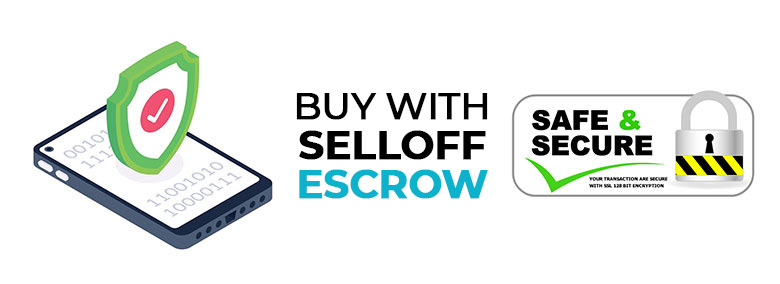










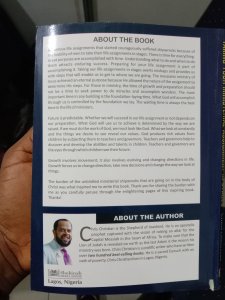

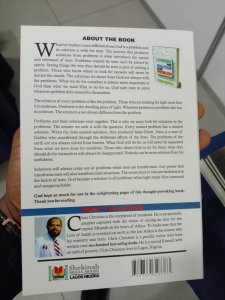




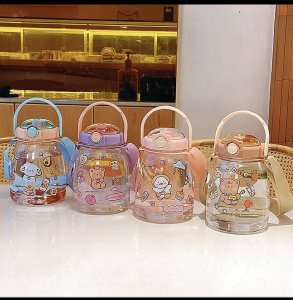


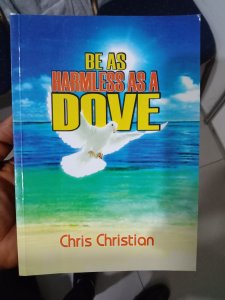


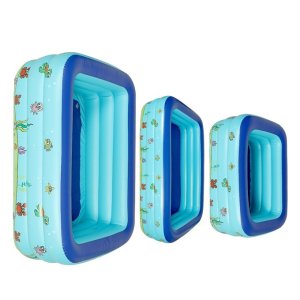

No comments found for this product. Be the first to comment!